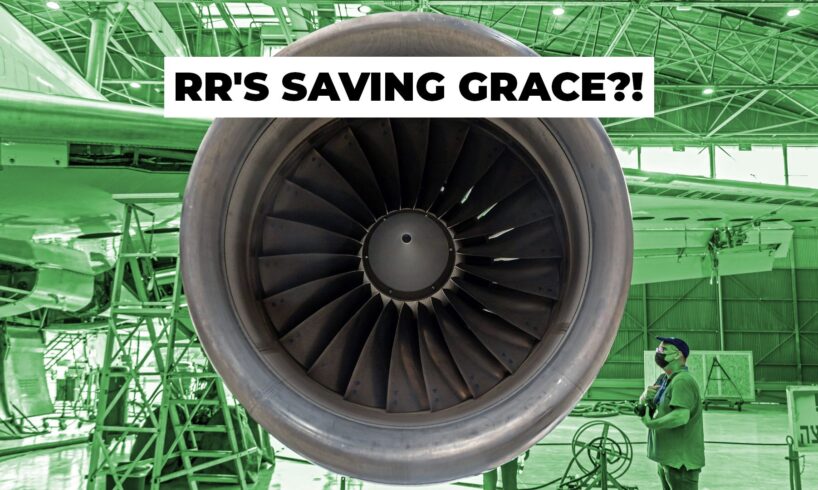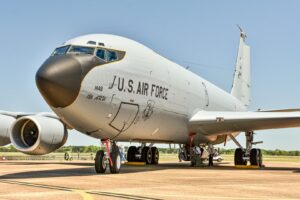
Few engines have left as significant a mark on commercial aviation as the legendary Rolls-Royce RB211. But why is it so important in aviation history? Born from a high-stakes contract in the late 1960s, it not only changed the future of Rolls-Royce but also influenced turbofan technology for decades ahead.
Today, aviation historians and enthusiasts see the RB211 as a turning point in jet engine design. It was the engine that introduced groundbreaking materials, from an experimental use of the composites to a unique three-shaft layout, with a lineage that eventually evolved into the well-known Trent family. In our detailed article, we will explore the history of Rolls-Royce as an engine maker, trace the RB211’s journey from the drawing board to the skies, examine its technical brilliance, and review the aircraft that carried it into service.
The RB211 was not just a powerplant; it was a bold gamble that nearly bankrupted its maker, but at the same time revolutionized fan blade technology and secured Rolls-Royce’s place in the jet age by making it the second-largest jet engine producer in the world. At its peak, it powered aircraft from nimble narrow-bodies like the Boeing 757 to intercontinental giants like the Boeing 747. For engineers, it became a masterclass in durability and adaptability; for airlines, it was a workhorse that delivered on performance and operating economics. As we explore the RB211’s story, we will see how its technical DNA continues to influence today’s most advanced turbofans.
Rolls-Royce: From Luxury Cars To Jet Power
Photo: Fasttailwind | Shutterstock
Rolls-Royce’s origins date back to 1906, when Charles Rolls and Henry Royce joined forces to produce some of the world’s most refined cars. But even in those early years, the company’s ambitions went well beyond automobiles. By the First World War, Rolls-Royce had become a trusted supplier of aircraft engines, with the Eagle engine powering the first nonstop transatlantic flight by Alcock and Brown in 1919 on the Vickers Vimy. This combined expertise in automotive craftsmanship and aeronautical engineering laid the foundation for future innovations.
The Second World War propelled Rolls-Royce further into aviation dominance. The company’s Merlin engine became legendary, powering the Spitfire, Hurricane, and even the P-51 Mustang. After the war, Rolls-Royce moved into the jet age with the Welland and Derwent turbojets, followed by the Conway, which was the world’s first turbofan jet engine. This forward-looking path paved the way for the RB211’s bold leap into wide-body airliner propulsion.
By the 1960s, airlines were demanding more fuel-efficient, quieter engines for a new generation of aircraft. Lockheed’s L-1011 TriStar program became the catalyst as Lockheed wanted to compete with the Douglas DC-10. To gain an advantage, TriStar needed better engines. So, Rolls-Royce proposed the RB211: a three-shaft high-bypass turbofan with revolutionary carbon fiber fan blades. It promised lower fuel burn, reduced noise, and improved reliability over competitors, but as history would show, delivering on these promises would test the company’s very survival.
Engineering A Game-Changer: The RB211’s Design
Photo: Nimbus227 | Wikimedia Commons
The RB211 defied tradition with its three-shaft design, featuring a low-pressure (LP), intermediate-pressure (IP), and high-pressure (HP) spool, each independently rotating at optimal speeds. This setup allowed for smoother power delivery, improved part-load efficiency, and better handling across various operating conditions. Although complex, it became a signature aspect of Rolls-Royce’s large turbofan approach.
Another innovation involved the use of new materials. The RB211’s original design famously featured Hyfil carbon fiber fan blades, developed to be lighter and more resilient than titanium. However, these blades failed bird-strike tests, leading to a costly redesign with titanium wide-chord blades. While this change caused financial difficulties for Rolls-Royce, it paved the way for the widespread adoption of new technology later on, ultimately providing the durability needed for decades of service and becoming a cornerstone of later engine families.
RB211 Technical Specifications
Parameter
Value / Description
Fan Diameter
74.1 inches (1.88 m)
Compressor Stages
6 IPC + 6 HPC
Turbine Stages
1 HPT + 1 IPT + 3 LPT
Bypass Ratio
4.3 : 1 (all variants)
535C Thrust Rating
37,400 lbf
535E4 Thrust Rating
40,100 lbf
535E4-B / E4-C Thrust Rating
43,100 lbf
Dry Weight (E4 family)
7,605 lb (3,449 kg)
Length (E4 family)
198.2 in (5 m)
Width (E4 family)
89.6 in (2.2 m)
Aircraft Applications
Lockheed L-1011 TriStar (RB211-22/524), Boeing 747-200/300/400 (RB211-524), Boeing 757-200/300 (RB211-535), Boeing 767-300 (RB211-524), Tupolev Tu-204-120 (RB211-535E4), Vickers VC10 testbed
Sources: Smithsonian National Air and Space Museum, Rolls-Royce, Aircraft Commerce
Once in the air, the RB211 proved its worth. It delivered excellent climb rates, dependable thrust in hot-and-high conditions, and impressive on-wing times between overhauls. For airlines, the combination of power and reliability translated directly into reduced delays, improved scheduling, and substantial economic returns over the engine’s service life.
The Aircraft That The RB211 Powered
Photo: Markus Mainka | Shutterstock
The 757’s perfect match: The Boeing 757 was perhaps the RB211-535’s most iconic platform, with the -535C entering service in 1983 and the improved -535E4 following in 1984. The 757’s long, narrow fuselage and efficient wing design complemented the engine’s high thrust-to-weight ratio, enabling excellent short-field and hot-and-high performance. Airlines quickly realized that the RB211-powered 757 could operate long transcontinental routes and even transatlantic flights while maintaining impressive fuel efficiency.
Rolls-Royce offered the RB211-535 in multiple thrust ratings: the original -535C at 37,400 lbf, the -535E4 at 40,100 lbf, and the uprated -535E4-B and -535E4-C at 43,100 lbf. These gave operators flexibility in matching engine performance to mission profiles. By the time 757 production ended in 2004, roughly 59% of all delivered 757s were powered by RB211s, a remarkable figure considering Pratt & Whitney’s PW2000 was the only other option.
The -535E4’s wide-chord titanium fan blades were a leap in durability and efficiency. They improved airflow characteristics, reduced fuel burn, and offered greater resilience against foreign object damage (FOD). This innovation would later influence the Trent family’s fan blade design philosophy, further cementing the RB211’s role as a technological bridge to the future.
Photo: Aktug Ates | Wikimedia Commons
Other aircraft that successfully used the RB211 are the following:
Lockheed L-1011 TriStar: Before the 757, the RB211 had already made history powering the Lockheed L-1011 TriStar. The -22B variant delivered around 42,000 lbf of thrust and debuted in 1972 as the TriStar’s sole powerplant. Its three-shaft architecture gave the L-1011 remarkable climb performance and allowed Lockheed to market the aircraft for both transatlantic and domestic US routes without sacrificing payload.
Boeing 747 with the RB211-524: The RB211 also found a home on the Boeing 747 family, particularly the -200, -300, and later the -400. The RB211-524, derived directly from the TriStar’s -22 core, gave the 747 improved fuel burn and noise compliance over earlier JT9D engines. These engines proved especially popular with
British Airways
,
Qantas
, and
Cathay Pacific
, that operated RB211-powered 747s for decades, according to Rolls-Royce.
Tupolev Tu-204. One of the more unusual applications of the RB211-535E4 was the Tupolev Tu-204, which was an export version for China and Egypt. In the 1990s and the beginning of the 2000s, Russian carrier Transaero also operated some Tu-204s (Tu-204-120) powered by Western engines, offering better fuel efficiency and lower maintenance than their Aviadvigatel PS-90-equipped counterparts. This rare pairing of British engines with a Russian airframe highlighted the RB211’s adaptability to platforms beyond its Western design origins, according to Aircraft Commerce Magazine and Russian aviation news website Airlines Inform.
Experimental and Testbed Roles: The RB211’s performance and reliability made it a prime candidate for experimental use. Rolls-Royce mounted RB211s on a Vickers VC10 testbed to evaluate new fan blade designs and combustor technologies. This test program fed directly into later Trent development, further proving the RB211’s long-term value as a technology demonstrator.
While the 757 remains the most commercially important RB211-535 platform, the engine’s usage across widebody, narrowbody, and even ex-Soviet aircraft demonstrates its versatility. Whether carrying passengers across the Atlantic, serving high-density short routes, or operating in unique geopolitical situations, the RB211 consistently proves its reliability, performance, and adherence to regulations.
Trials, Triumphs, And A Brush With Bankruptcy
Photo: Aero Icarus | Wikimedia Commons
The RB211’s early development was as dramatic as any in aerospace history. The original Hyfil carbon fiber fan blades, hyped for their strength-to-weight advantage, failed to pass bird-strike certification. This forced an urgent and expensive redesign with titanium blades, and, as a result, added weight and delayed the Lockheed L-1011 program by a year. The cost overrun was so severe that, in February 1971, Rolls-Royce was forced into receivership, a rare move for such a prestigious firm.
The British government recognized that allowing Rolls-Royce to collapse would jeopardize not just a major national manufacturer but also international contracts tied to the L-1011. In a high-profile rescue, Rolls-Royce’s aero engine division was nationalized. This intervention stabilized the company, allowed the RB211 to be completed, and set in motion a program that would eventually restore profitability.
Once in service, the RB211 quickly began repaying its debts, not just financially, but in reputation. Airlines praised its smooth operation, fuel economy, and ability to handle high cycle counts without excessive wear. Over the 1970s and ’80s, incremental improvements in turbine materials, compressor aerodynamics, and noise reduction bolstered its standing as a world-class powerplant.
The RB211’s Evolution And The Birth Of The Trent Family
Photo: Steve Mann | Shutterstock
Throughout the 1980s and ’90s, Rolls-Royce continued refining the RB211 core. The -524 version, designed for heavier 747 variants, delivered thrust up to 60,600 lbf and improved fuel efficiency over earlier models. Later, the -524G/H-T versions incorporated advanced cooling techniques and low-emissions combustors, extending service intervals and meeting stricter ICAO noise standards.
But the RB211’s greatest legacy is, perhaps, its direct evolution into the Trent family. The Trent 700, developed for the Airbus A330, retained the three-shaft layout and wide-chord fan concept but scaled the architecture to larger diameters and higher bypass ratios. Each successive Trent, from the 800 on the Boeing 777 to the 900 on the A380 and 1000 on the 787, carried RB211 technology forward into new market segments.
Although production of RB211-powered aircraft has ceased, the engines continue in active service. Many RB211-535E4-powered Boeing 757s still operate in cargo roles for carriers like DHL and FedEx. Meanwhile, some RB211-524-powered 747s remain in service as freighters. This long service life exemplifies the design’s robustness.
Legacy And Lasting Impact
Photo: BoeingMan777 | Shutterstock
From its bold carbon fiber gamble to its enduring role in freight operations, the RB211’s story is a blend of risk, resilience, and reinvention. The engine pioneered the wide-chord titanium fan blade, perfected the three-shaft concept in large turbofans, and proved the commercial viability of high-bypass ratios in both narrow- and wide-body jets. It carried Lockheed’s TriStar, Boeing’s 747 and 757, and even a Soviet-era Tupolev Tu-204 airliner across millions of miles, helping define an era of air travel. Its engineering choices influenced nearly every subsequent Rolls-Royce large turbofan.
Beyond technology, the RB211 revolutionized the airline industry by enabling efficient long-haul flights on smaller aircraft like the 757. This allowed airlines to operate “long and thin” routes in low-demand, long-distance markets that would have been unprofitable with wide-body planes.
Not without its flaws, particularly its turbulent development and high initial costs, the RB211 remains one of the most significant engines in civil aviation history. It bridged the gap between the pioneering turbofans of the 1960s and the highly efficient powerplants of the 21st century, securing Rolls-Royce’s position among leading engine manufacturers.
Stock Code
RR
Business Type
Engine Maker
Date Founded
March 15, 1906
CEO
Tufan Erginbilgic






